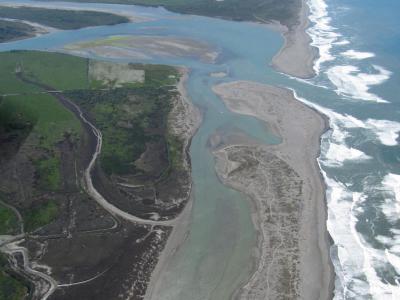Innovative Approaches to Understanding and Improving Salmon-Habitat Relationships
Session Coordinator:
Cynthia Le Doux-Bloom, Ph.D., AECOM
Evolving our science-based understanding of salmon-habitat relationships is paramount to successful recovery. Recovery can be undermined across spatiotemporal scales by poor planning, untested restoration and hatchery-release practices, and competition from introduced species. The purpose of the session is to learn about innovative approaches currently being piloted or implemented which are aimed at increasing our understanding and ability to improve salmon-habitat relationships. This session will highlight new concepts focusing around timber regulation and forest restoration, recovery strategies, extirpation prevention, lagoon habitat-use, smolt release timing, and the impacts of the introduced brown trout.
The Progress and Promise of the Timber Regulation & Forest Restoration Program to Implement Planning Watershed Pilot Projects
Richard Gienger, Sierra Club, and Russ Henly, Ph.D., California Natural Resources Agency
Life on the Edge: Recovering Southern California Steelhead
Mark Capelli, South-Central/Southern California Steelhead Recovery Coordinator, National Marine Fisheries Service, West Coast Region
P.A.C.T. – A Trans-agency, Trans-discipline Program to Prevent Coho Salmon Extirpation in the Central California Coast
Stephen Swales, Ph.D., California Department of Fish and Wildlife
The Effects of Early Sandbar Formation on the Ecology and Population Dynamics of Steelhead and Coho Salmon in the Scott Creek Lagoon
Ann-Marie K. Osterback, Ph.D., Southwest Fisheries Science Center, NOAA Fisheries
Effects of Staggered Release Timing of Hatchery Coho Salmon Smolts on Subsequent Adult Returns to Scott Creek, California: Spreading Risk to Cope with Variable Ocean Conditions
Brian Spence, Ph.D., NOAA Fisheries, Southwest Fisheries Science Center, Fisheries Ecology Division
Assessing the Impact of Brown Trout on the Trinity River, CA
Justin Alvarez, Hoopa Valley Tribal Fisheries

